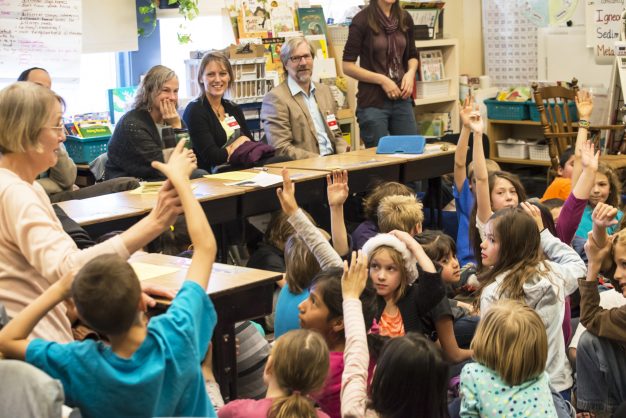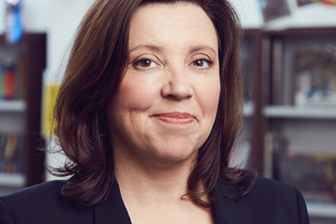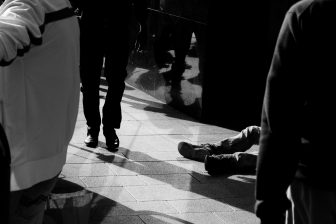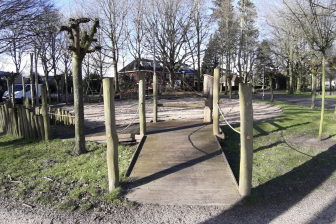
Louise Chawla’s thoughts on children’s participation – then and now
This year marks the 40th anniversary of Growing Up in Cities (GUIC). From Kevin Lynch’s field work in 1976 to the Growing Up in Cities revival that began in 1996, through Growing Up Boulder (GUB) and other initiatives worldwide, GUIC has built a real legacy in participatory practice that engages young people in creating places that people will love and care for.
I was recently privileged to spend some time with Dr. Louise Chawla, who coordinated UNESCO’s Growing Up in Cities work from 1996-2006 and helped establish GUB in 2009. Below is an excerpt from this interview, in which Dr. Chawla shares the history, lessons, and her perspectives for moving children’s participation into the future (see also Chawla et al. 2005)
What was the motivation for re-starting GUIC when you did?
It was actually the city of Trondheim, Norway, where I was a Fulbright Scholar. Trondheim was planning for its 1000th anniversary jubilee, in 1996, so institutions all over the city were meeting and talking about what they could do as their contribution, and I realized that it would be just exactly 20 years since Kevin Lynch published Growing Up in Cities. So I told the Norwegian Centre for Child Research at the University of Trondheim, that if they wanted to put their jubilee celebration on the map in a lasting way, they could go back and revisit the cities 20 years later and see what has happened. The Board really like the idea, so then I contacted UNESCO, who had just started their MOST (Management of Social Transformation) programme, and they were quick to come on board. The other piece was that we were all preparing for UN Habitat II in Istanbul in 1996, so I was connected with UNICEF through Sherry Bartlett, Roger Hart, and David Satterthwaite, who were working to start the Child Friendly Cities Initiative (CFCI). We were all advisors to each other, we were very interlinked, so GUIC and CFCI were intentionally very complementary.
The project was like a dandelion head, our goal to blow its seeds all over the world.
The big thing that had changed [since Kevin Lynch did his work] is that the UN Convention on the Rights of the Child (CRC) had been ratified, and this created a whole new foundation for both initiatives. I went to the Kevin Lynch archives at MIT (Massachusetts Institute of Technology) and spent a few days there, going through all of his papers. His intention was that young people were going to inform urban policy and action. And two of the four original sites, in Australia and Argentina, tried to do that. In Kevin Lynch’s papers, they still had the overlays that young people had done for the plaza, with tracing paper over the maps, showing how to make it a better place for all ages (and as usual, the young people thought of all ages). And the leaders of the project presented these ideas to city council, and it went absolutely nowhere. And the same thing happened in Australia, when the kids presented to government leaders, the leadership was like, “what are you doing here?” Lynch was very frustrated and expressed that in his papers. So to him, he really had hopes this would be an activist project, and when he realized it wasn’t going to happen, salvaging and putting all the reports into a book was the next best thing that he could do, and so he did that and moved on to many other things in his life. But I felt that the CRC provided a new foundation, where it was going to be harder for municipalities to dismiss people out of hand the way they had done 20 years before. So we had participation clauses written into the Habitat Agenda, and we were also building on Agenda 21, where children and youth were supposed to be a major party in instituting sustainable development. We had that foundation of international agreements, and with that we were able to move forward. Coming from Kentucky, I thought of it as assembling quilt work for the 8 countries where we started the work.
What were key outcomes and challenges from that time?
What UNESCO funded was essential – two face-to-face gatherings in Trondheim, first for training. I had set it up so that we went out on the streets and trained in all the core methods from Kevin Lynch’s days and that we were going to use again. Lynch’s methods came out of the advocacy planning movement, so they had been used with multiple ages, not just with kids, and in the 60s and 70s they already had been trialled extensively, and they really worked well. It was essential to gather in person and train in person. [We all agreed that we were] going to do this set of core methods and improvise in terms of new creative methods. People did that too. And then we did the two books, and there was a film made in South Africa that aired on television, and just multiple book chapters and articles and conference presentations, so we really did a lot to spread the word, because my sense of the project was that it was a dandelion head, and our goal was to blow the seeds all over the world, to let them be picked up where they will.
In 2006, at the World Urban Forum in Vancouver, we had accomplished this aim, and shown lots of different kinds of creative ways of working with children, mostly from low-income communities. The hardest thing always was moving from young people’s ideas to action – that was the big challenge, and we wrote about that in the book, and some of those 8 countries decided from the beginning that they were just going to do the research phase and others were going to move to the action phase, but really getting substantial action was difficult.
The GUIC work spread to other places, David Driskell was pioneering methods for action with Growing Up in New York City, and the goal there was that for this [GUIC] to continue, it needed to be embedded in organizations that are there for the long haul: school and community-based organizations that serve youth.
One of the things we realized, is that it’s got to be bottom up, top down, with people in all levels of the city, from city agencies to people on the street working with kids, organizations, people working in classrooms, working with kids.
How do you see the GUIC work and its legacies as different from projects in which designers work with kids?
Designers and kids might be project-based for a single project – the designers have a commission, and that’s a good use of participatory processes – but Kevin Lynch inspired us. He was such a great humanist as well as a designer – creating localities where people love and care for their places, places that can afford optimal renewal and development. That was his vision for public spaces, and that was ours. It was a common ethos we all shared on the revival project. We were still descending from the 60s and 70s, conceiving an alternative form of what society can be. We wanted to create cities that are welcoming for children, that would be the kinds of localities that afford optimal child and youth development and encourage youth to be creative, and active, in shaping their places for the better, to be real citizens of their cities. So it’s a much larger goal of embedding those ideas into institutions and cultures in the city, which is not easy to do – particularly when we’ve chosen to work with low-income communities.
A model that can inspire action in other cities as well
And then there is Growing Up Boulder – which was an opportunity to take what we had learned, with an amazing constellation of people, Willem van Vliet who had so much experience with UN Habitat, myself, and David Driskell, and embracing those ideals, and starting again. I think what you and Mara (Mintzer) have done, for me is so wonderful to see, you’ve made GUB not just something for the city here, but a model that can inspire action in other cities as well. And that’s always – any good idea, let it not just serve its own place, but let it serve every other place where people want to take these kind of ideas and run with them. And always with the goal that, here’s the methods, we’ve tried them, but be creative, take it in whatever direction works best, given the people you have, and the city conditions, and the culture, and its possibilities.
Is it really replicable?
I think every time you are working with children and youth in design and planning, you’ve got special people. It was the child ombudsperson in Christchurch who said, “you bang your head on every door until you find the right person.” And a development friend in Kentucky said, “development is relationships.” Three words say it all. That’s why there’s no one-size-fits-all way of doing things, but you go and meet with people in other countries, and they are doing their own pieces [of the work].
We’re at a beginning of a change, and we don’t know where it’s going to go
As designers, and as social scientists, we need to go into communities and work with people there, and understand their perspectives. The world remains a huge stage of conflict between those ideas of the 60s and 70s and the forces of top down government by elites in power. So when you say “is it replicable?” I think that question has to be put into that context. It is replicable when there is a meeting of minds who want to create democratic principles, and to have children a part of that.
Nobody knows what the future is going to bring, but certainly, we’re going to have to live more sufficiently where we are, which is going to require that people put all of their wisdom and their know-how together, to take care of what you have where you are. We’re at the beginning of a transformation, and we don’t know where it’s going to go. We could be moving toward a really dystopian world, or a world that discovers the potential of community and community resourcefulness. And where that happens, it creates openings for children and youth to be a part of that as well, to be a part of a strong democracy.
Author: Victoria Derr
Photo Credit: Photo by Growing Up Boulder
References
Chawla, L., Blanchet-Cohen, N., Cosco, N., Driskell, D., Kruger, J., Malone, K., Moore, R. and Percy-Smith, B., 2005. Don’t just listen-Do something! Lessons learned about governance from the Growing Up in Cities Project. Children Youth and Environments, 15(2), pp.53-88.



